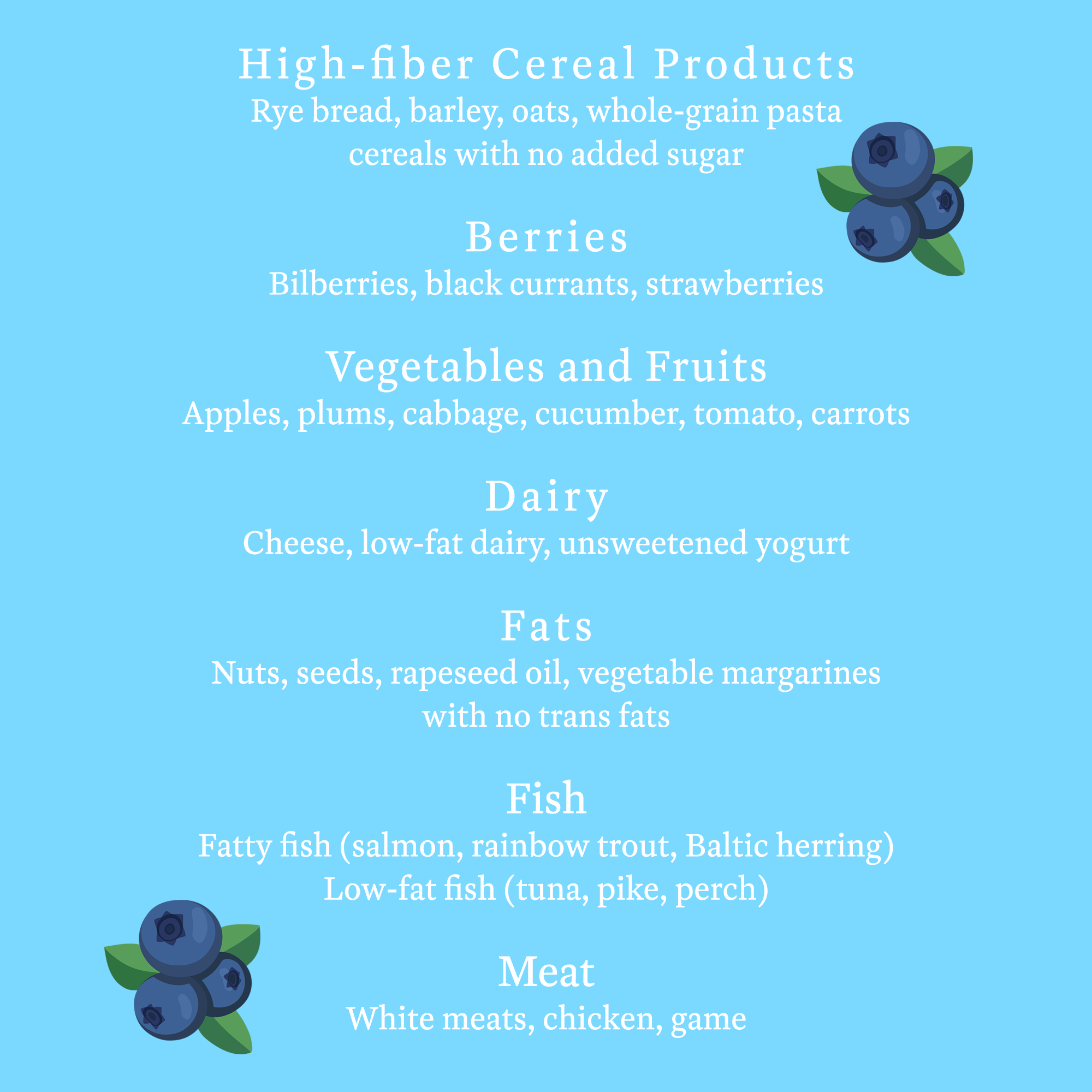
In the culinary world, Nordic food couldn’t be hotter. The cuisine, from countries including Denmark, Finland, Iceland, Norway and Sweden, is the backbone of some of the best restaurants in the world. It even has its own manifesto.
But a recent study published in the Journal of Nutrition suggests that the new Nordic diet may be a good idea for anyone, foodie or not, to follow.
Think of a healthy Nordic diet as a cooler-temps take on the Mediterranean diet: rich in whole grains, fatty fish, root vegetables, cabbage, rapeseed oil and bilberries, which are relatives of blueberries. Past studies have shown that sticking to a healthy Nordic diet can lower levels of LDL cholesterol and blood pressure—both risk factors for cardiovascular disease—and can support weight loss.

In the new study, the researchers recruited men and women with metabolic syndrome and assigned them to an average Nordic diet or a healthy Nordic diet (which included many of the foods shown in the graphic above) for at least 18 weeks. The healthy Nordic diet called for about 200 grams per day of high-fiber cereal products, at least 500 daily grams of vegetables, fruits and berries, two fatty fish meals a week and one meal of lean fish. In contrast, the average Nordic diet was lower in fiber, higher in fat and included limited amounts of fruits and vegetables.
To see how the diets were affecting people’s bodies, the researchers took blood samples from 156 people at several points during the study and analyzed them to find out more about the lipids in their cells and tissues. Lipids contribute to the development of metabolic syndrome and type-2 diabetes, the researchers note, and concentrations of certain lipid components are indicators of type-2 diabetes risk. Past research by the research team has found that eating whole grains, fatty fish and bilberries favorably change a person’s lipid profiles, which may partly explain how people who consistently eat these healthy foods can lower risk for diseases like type-2 diabetes and heart disease.
After almost five months on the healthy Nordic diet, people in the study showed improvements in several lipid components. They had increased blood concentrations of plasmalogens: lipids with antioxidant-like qualities that are linked to less type-2 diabetes and reduced low-grade inflammation, a state marked by elevated inflammatory markers in the body and one that often comes before chronic diseases like cardiovascular disease and type-2 diabetes.
“The healthy Nordic diet was not so strict that we would have instructed participants to weigh their food or eat exactly certain amounts of some foods,” says the study’s co-author Maria Lankinen, clinical dietitian and postdoc researcher at the University of Eastern Finland. “It was much more flexible so that everybody could follow that diet easily forever.”
Dietary recommendations set by the Nordic Council of Ministers emphasize whole foods and eating patterns instead of hitting daily percentages of individual nutrients. While the latest version of the U.S. dietary guidelines also touted the message of choosing quality foods over nutrients, they have been criticized for falling back on confusing formulas that instead encourage the same old nutrient-based approach—as opposed to thinking about foods holistically.
Of course, no matter how healthy, a diet will never work if people don’t want to follow it. But there’s some evidence that people actually like following the healthy Nordic diet. The researchers note that 26% of the average diet group dropped out of the study, while only 8% of people dropped out of the healthy diet group.
More Must-Reads from TIME
- Introducing the 2024 TIME100 Next
- The Reinvention of J.D. Vance
- How to Survive Election Season Without Losing Your Mind
- Welcome to the Golden Age of Scams
- Did the Pandemic Break Our Brains?
- The Many Lives of Jack Antonoff
- 33 True Crime Documentaries That Shaped the Genre
- Why Gut Health Issues Are More Common in Women
Write to Mandy Oaklander at mandy.oaklander@time.com